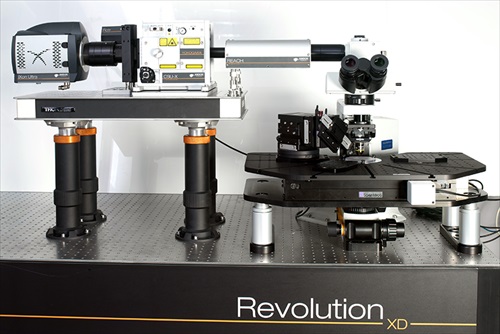Members Login

Channels
Special Offers & Promotions
Andor iXon 897 EMCCD camera discovers two undetected stars in well-mapped globular cluster
iXon EMCCD camera's spatial resolution and high readout speed demonstrate possibility of finding more stars and planetary systems in our galaxy
With the accelerating interest in seeking out Earth 2.0 exoplanets, the need for accurate star maps on which to base our searches only increases. However, an international team of scientists has found two previously undetected stars in a recently mapped globular cluster using the ultra-sensitive Andor iXon 897 Electron Multiplying CCD camera on the Danish 1.54m telescope at La Silla, Chile. This discovery raises the possibility that we can pinpoint more potential target planets that would be hospitable to life.
"To date, conventional CCD cameras have been used for the majority of astrophysical surveys," says Jesper Skottfelt from the Niels Bohr Institute, Copenhagen. "Unfortunately, obtaining a reasonable signal-to-noise ratio for the fainter objects in an image with a CCD detector leads to saturation of the pixels from the brightest stars. A census of the stars in cluster NGC 6981 performed by Bramich et al. (2011)(2) just two years ago suggested 43 variable stars but, using the EMCCD photometry of the iXon 897 for our new survey, we found two new variable stars in close proximity to a bright star.
"This discovery demonstrates that EMCCDs are a powerful tool for performing high-precision time-series photometry near bright stars and in crowded fields where the brightest stars saturate CCD images and affect nearby pixels."
According to Colin Duncan, an imaging application specialist at Andor, "The iXon's extended serial register means it produces images with negligible readout noise compared to the signal, even at very high readout speeds. This makes it the ideal choice for high frame rate applications and means that much brighter stars can be observed without saturating the CCD and the individual exposures can be combined into stacked images at a later stage in order to achieve the required signal to noise ratio for objects of interest. Although EMCCD exposures need to be calibrated in a different way to conventional CCD imaging data, the algorithms required to do this have already been developed and described by Kennet Harpsøe at al., 2013(3)."
In the 17 years since the discovery of the first planet in orbit around another star, more than 700 exoplanets have been detected.
more about iXon series of scientific cameras
Media Partners



